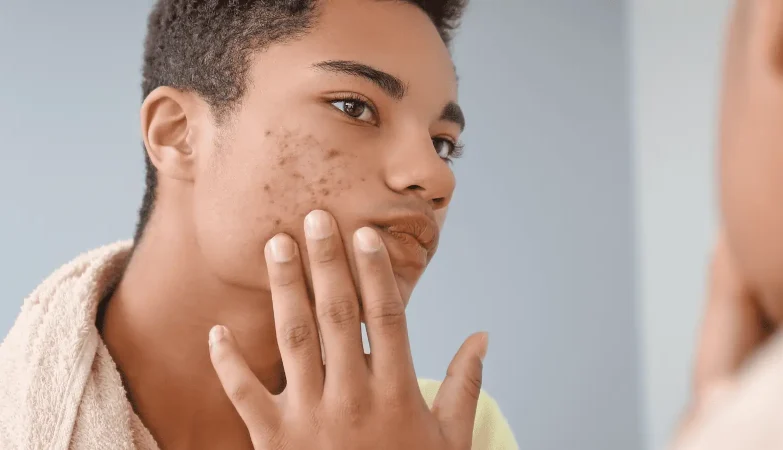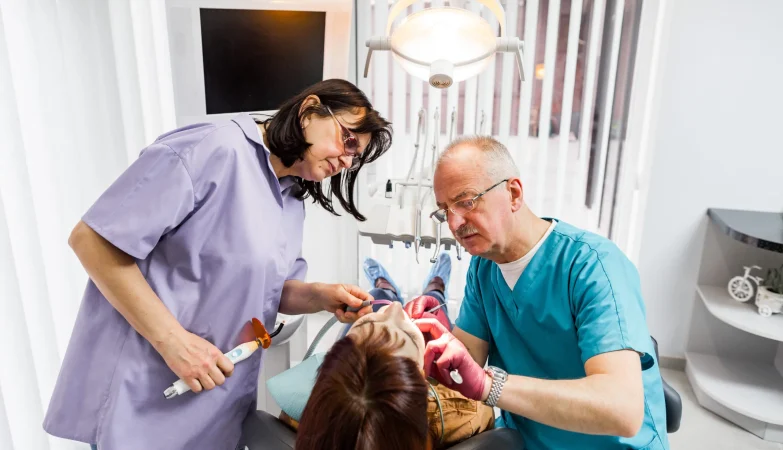You slather on the SPF every morning, rain or shine. You know UVA and UVB rays are public enemy number one for your skin. But what about the light emanating from your laptop, your smartphone, that late-night Netflix binge? That’s the new frontier in skincare, and honestly, it’s one we can’t ignore any longer.
Blue light protection skincare isn’t just a buzzy marketing term—it’s a direct response to how we live now. Our faces are practically glued to screens, and our skin is starting to show it. Let’s dive into what this is all about and how you can build a solid defense.
What Exactly Is Blue Light, Anyway?
Think of the sun’s rays as a full spectrum of colors. Blue light, or High Energy Visible (HEV) light, is a high-energy part of that spectrum. It’s not all bad—in fact, natural blue light from the sun helps regulate our sleep-wake cycle. The problem is the dose.
We’re getting an unprecedented amount of artificial blue light from our digital devices. And this stuff penetrates deep into the skin, deeper than UVA and UVB rays in some cases. It’s like a slow, silent stressor that doesn’t cause a sunburn but creates a different kind of chaos underneath the surface.
How Blue Light Actually Affects Your Skin
So, what’s the real damage? Well, it’s mostly about oxidative stress. Blue light generates free radicals, those unstable molecules that bully your skin’s healthy cells, breaking down collagen and elastin. You know, the stuff that keeps your skin firm and bouncy.
The Key Culprits
- Premature Aging: This is the big one. The breakdown of collagen and elastin leads to fine lines, wrinkles, and a loss of elasticity. It’s sagging and creasing before your time.
- Hyperpigmentation: Blue light can trigger melanocyte activity, the cells responsible for pigment. This means it can worsen melasma and cause dark spots, especially in darker skin tones. It’s a major pain point for anyone trying to even out their complexion.
- Skin Barrier Disruption: Your skin’s natural barrier can become compromised, leading to dryness, redness, and increased sensitivity. It just can’t hold onto moisture as well.
- Inflammation: Think of it as a low-grade, constant irritation that can exacerbate conditions like rosacea and acne.
The New Skincare Heroes: Ingredients That Fight Back
Okay, enough with the scary stuff. Here’s the good news: the world of cosmeceuticals has risen to the challenge. Formulators are now creating products packed with powerful antioxidants and specific blockers to act as a shield. Here’s a cheat sheet of what to look for.
| Ingredient | How It Helps | Where You’ll Find It |
| Vitamin C (L-Ascorbic Acid) | A classic antioxidant that neutralizes free radicals and helps brighten existing dark spots. | Serums, moisturizers |
| Niacinamide (Vitamin B3) | Strengthens the skin barrier, reduces inflammation, and helps control pigmentation. | Almost everything—serums, creams, toners |
| Ferulic Acid | Boosts the effectiveness of other antioxidants like Vitamins C and E, making them more stable and potent. | Often paired with Vitamin C in serums |
| Astaxanthin | A super-potent antioxidant from algae that gives a strong defense against environmental stressors. | Serums, overnight masks |
| Iron Oxides | These mineral pigments physically block blue light. They’re often found in tinted sunscreens. | Tinted sunscreens, BB/CC creams |
And don’t forget about minerals. Zinc oxide and titanium dioxide, the stars of physical sunscreen, offer a broad-spectrum shield that includes some blue light protection. A tinted mineral sunscreen? Honestly, that’s one of the most effective and simple blue light protection skincare products you can own.
Building Your Blue Light Defense Routine
You don’t need to throw out your entire skincare wardrobe. It’s about strategic additions and, you know, a little shift in mindset. Here’s a simple, effective plan.
1. Morning is Key
Your AM routine is your primary defense. This is when you load up on antioxidants.
- Cleanse: A gentle, water-based cleanser.
- Antioxidant Serum: The star of the show. A Vitamin C serum is your best bet here. It sits on your skin like an invisible army ready to fight off free radicals all day.
- Moisturizer: Something hydrating but not too heavy.
- Sunscreen (Non-Negotiable!): Apply a broad-spectrum SPF 30 or higher. For maximum blue light protection, choose a tinted mineral formula. The iron oxides in the tint make a real difference.
2. Don’t Forget Your Nightcap
While blue light exposure is highest during the day, your repair work happens at night. This is when you help your skin recover from the damage it did encounter.
- Use a niacinamide serum to calm and repair your barrier.
- Look for overnight masks or treatments with astaxanthin or other reparative antioxidants.
- Retinoids, used at night, can help boost collagen production to counteract the aging effects.
The Big Picture: It’s More Than Just Creams
Skincare can only do so much. The most effective blue light protection strategy is a multi-pronged approach. It’s about habits.
Use the night mode or blue light filter on your devices, especially in the evening. It helps your skin and your sleep. Try to take regular breaks from your screen—the 20-20-20 rule is a good one: every 20 minutes, look at something 20 feet away for 20 seconds. And, well, maybe don’t scroll through social media in bed right before you turn off the light. Your skin—and your brain—will thank you.
A Final Thought on Your Digital Skin
Adopting blue light protection skincare isn’t about fostering a fear of technology. It’s about acknowledging the reality of our modern lives and making small, intelligent adjustments. It’s an act of self-care in a hyper-connected world. You’re not just protecting your skin from a screen; you’re creating a moment of mindfulness in your daily routine, a conscious layer of defense in a world that’s constantly on.







